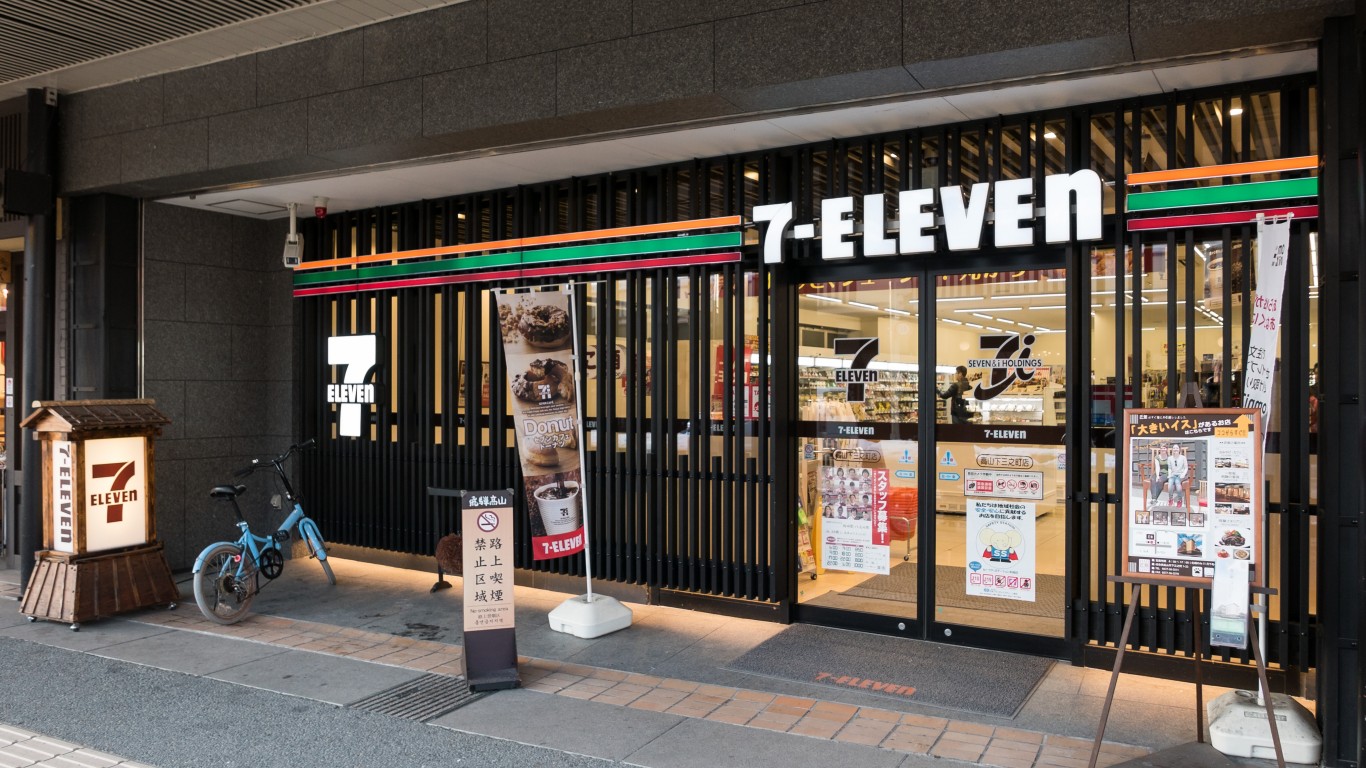
24/7 Wall Street Insights
- Realty Income Corporation is one of the largest publicly traded REITs, and the largest net lease REIT.
- Dividend Stocks with a history of dividend increases are generally on stronger financial footing and the reliability of their dividend payments for passive income is stronger than with stocks whose dividends fluctuate. .
- Unlock Your Free Report on Top High Dividend Stocks Today
Real Estate ownership and development is one of the premier platforms for wealth creation. Most billionaires in the US, including President Donald Trump, obtained a significant portion of their net worth through real estate.
Over the past quarter century, Robert Kiyosaki has become an internationally popular finance and investment author and speaker. He has repeatedly lauded the qualities of real estate as an asset class in his lectures and books. The formula he codified for maximizing returns on real estate became known in many financial circles as “BRRR”.
The BRRRR method was first cited by Robert Kiyosaki in his book Rich Dad Poor Dad, and is used by many real estate investors today. The BRRRR method is an acronym that stands for Buy, Rehab, Rent, Refinance and Repeat. Writ large, the Realty Income Corporation (NYSE: O) has put its version of this principle into practice and has subsequently built one of the US largest publicly traded REITs from it.
The Monthly Dividend Company For Investors

Real Estate Investment Trusts (REITs) are entities that register with the SEC and for tax purposes, are required to remit 90% of profits to shareholders. A number of REITs pay a dividend monthly, as opposed to quarterly. San Diego-based Realty Income Corporation not only has unwaveringly paid out monthly dividends to its shareholders from the beginning, but has notched 125 consecutive quarterly dividend increases since its 1994 public listing debut.
Founded in 1969 by Bill and Joan Clark, Realty Income Corporation began with their purchase of a Northridge, CA Taco Bell property directly from owner Glen Bell. From the start, their unique strategy was to acquire commercial properties for lease to solid companies with strong financials in exchange for third party investment capital from investors who would receive monthly dividends. A classic win-win scenario; this business model would repeatedly build on its success for the next 55 years. Subsequently, this purchase-leaseback strategy would become the cornerstone of the Realty Income game plan. Realty Income Corporation was registered as a REIT with the SEC as it went public in 1994 with a $45 million portfolio. By 2024, this portfolio had grown to $4.079 billion as of January, 2024.
The Business Model

Realty Income has an in-house team dedicated to identify popular business trends, locations, demographics, traffic counts, and quantitative analysis of IRR and capital requirements, prior to a decision to proceed on a property and prospective tenant. The Realty Income business model builds on the BRRR principle with a number of inherently risk-mitigated criteria points that help to ensure success if all of them are met. These include:
- Property Type – preference is for retail and industrial properties with strong visibility and high density population for average minimum 10-year net lease;
- Retail Clients should have a low price point component to their business to ensure financial stability;
- Non-retail clients should be Fortune 1000 or investment grade equivalent;
- Acquisitions should be either all cash, mortgage assumption, or operating partner unit issuance (REIT shares).
The Realty Income in-house team aggressively seeks both new prospective acquisitions and qualified tenants on a daily basis. The “Rehab” portion of the BRRR formula manifests in development financing that Realty Income can supply for remodeling or other customization to incentivize a buy-leaseback transaction.
In a nutshell, Realty Income has some powerful financial clout to raise capital at low cost, due to its size. This allows it to aggressively bid on properties and still make a profit. It also can bid on larger deals on its own, without the need to syndicate them.
The Tenants

Realty Income has an impressive catalog of well known and successful tenant corporations. Some of the more notable ones are:
- MGM (Bellagio)
- Chipotle
- 7-Eleven
- CVS Pharmacies
- Walgreens
- Treasury Wine Estates
- Lowe’s
- Dollar General
- FedEx
- L.A. Fitness
- Sainsbury’s
- Dollar Tree
- Sam’s Club/Walmart
- BJ’s Wholesale Clubs
An Example of the Realty Income Business Model At Work

Realty Income’s intensive preparation research and financial wherewithal is amply demonstrated in a breakdown of its lease-buyback deal for the Wynn Encore Boston Harbor Resort and Casino in 2022.
- Realty Income researched gaming laws for MA, which opened in 2022.
- The Wynn Encore held only 1 of 3 gaming licenses granted by the state of MA.
- Location-wise, the Wynn Encore is the only casino in the metropolitan Boston area, and is within 5 miles of Harvard University, Fenway Park, and Boston Logan International Airport.
- Built in 2019, the Wynn Encore is LEED platinum certified, with 3.1 million square feet, 10,000 square feet of retail space, 670 luxury rooms, and 2,700 slot machines.
- Realty Income bought the property for $1.7 billion with a 5.9% cash cap rate at a discount to replacement cost..
- Rent is triple net leased for 30 years with rent escalators linked to the Consumer Price Index.
Is Realty Income a Dividend Stock To Buy Today?

Wall Street analysts frequently include Realty Income on their dividend stock “buy” lists, citing its 3.70% dividend growth rate over the past decade, and immutable dividend increases each fiscal quarter for the past 30 years. These analysts include Zacks, Benzinga, RBC, Mizuho, Scotiabank, Stifel, and others.
Dividends aside, Mizuho’s Vikram Malhotra also noted that there was cause for increasing his price target for Realty Income Corporation. The company’s most recent acquisition was Spirit Realty Capital. More interestingly, it also formed a joint-venture with Digital Realty Trust to construct and lease data centers. The phenomenal growth of AI has made data centers the latest commercial real estate trend, so Realty Income’s analysts have apparently already greenlit the data center sector for new conquests.
While a 5.61% yield at the time of this writing is less than that of some other dividend stocks, Realty Income is definitely a stock to keep in mind for the long haul, since getting an increase four times a year on rock solid reliable payments is safer prospect than finding out about a dividend cut from a riskier prospect.
Thank you for reading! Have some feedback for us?
Contact the 24/7 Wall St. editorial team.





